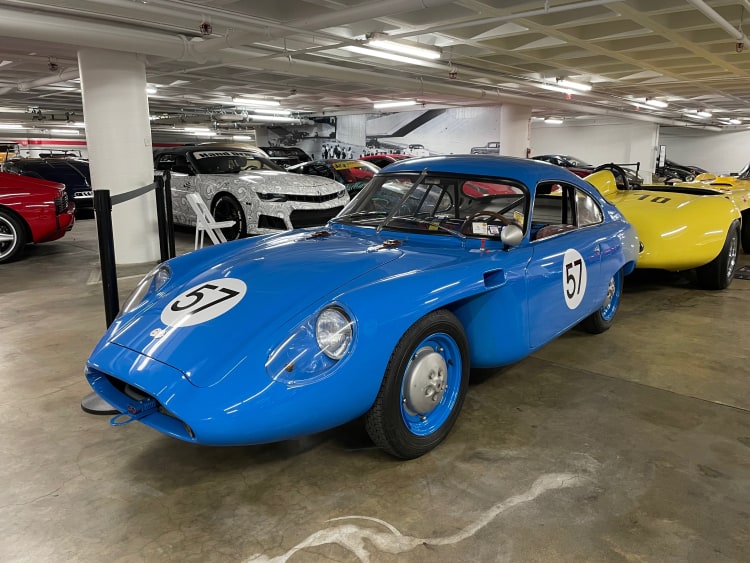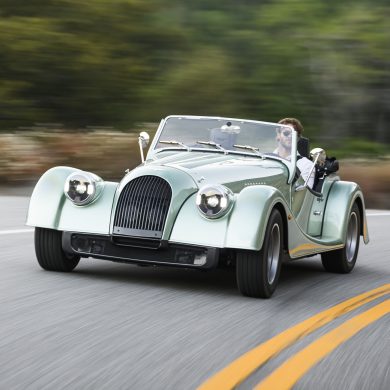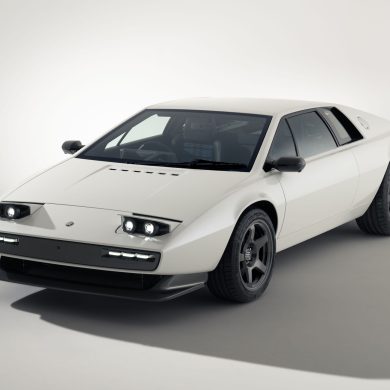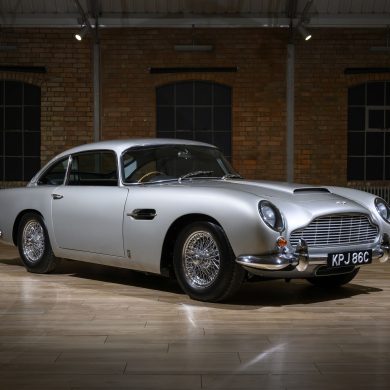Petersen Automotive Museum has introduced more than eight legendary cars, including supercars, movie vehicles, and historic cars to The Vault, presented by Hagerty
The Vault, presented by Hagerty, now has an updated tour experience with the Petersen Automotive Museum announcing greater than eight new vehicles to be added to their already extensive collection.
The new Vault cars to be introduced include:
- 1939 Packard Twelve Landaulet
- 1948 Bentley Mk VI “New Look” Saloon
- 1959 Deutsch-Bonnet HBR5 Coupé
- 1960 Plymouth XNR Replica
- 1964 Chevrolet Impala “Gypsy Rose”
- 1974 Dale Mock-Up
- 1982 Knight Industries Two Thousand “K.I.T.T.” car
- 2015 Chevrolet Camaro Art Car
“During the closure, our team continued to curate our collection and build exhibits to tell new stories about the automobile and appeal to a wide range of enthusiasts.”
Petersen Automotive Museum Executive Director Terry L. Karges
Here’s a look at the above new additions to The Vault at the Petersen Automotive Museum.
1939 Packard Twelve Landaulet by Brewster
The 1920s saw the coachbuilding industry allowing clients to have exclusive customization abilities, especially for those who could afford to acquire it.

The body of this Packard was constructed by Brewster to the specification of Post Cereals-heiress Marjorie Merriweather Post and was originally used on a 1927 Rolls-Royce chassis.
In 1935, when the Rolls-Royce was ready to be traded in for a new model, Ms. Post, so captivated by the bespoke coachwork, had it removed from the original Rolls-Royce and fitted on the more technically superior Packard Twelve chassis that she purchased specifically for it.
In 1939, she repeated the process by placing the body on another new updated Packard Twelve chassis.
This example is built in the “landaulet de Ville” style, with the coachwork comprises a top hat that can only be lowered over the rear-seat passengers. This allowed the chauffeur to stay enclosed in isolation and free from distraction as he maneuvers the heavy vehicle around.
1948 Bentley Mark VI “New Look” Saloon by James Young
In the early 1920s, British coachbuilding company James Young Ltd. commenced designing and constructing bodies on Bentley chassis.

Like many other coachbuilders after the Second World War, the firm offered up new visions for future vehicles’ styling. Meant to offer a preview of Bentley design in the postwar era, this “New Look” Two-Door vehicles featured a streamlined design with integrated fenders, flat or “slab” sides, and enclosed rear wheels.
The example on display was exhibited at the 1948 Earl’s Court Motor Show and is one of only three Bentley “New Look” Saloons built by the James Young firm.
1959 Deutsch-Bonnet (DB) HBR5 Coupe by Cottard
The French manufacturer Deutsch-Bonnet (DB) had already proven its success in international racing before releasing the HBR5 coupe, which would eventually become the company’s most successful model.

It featured a fiberglass body matched with a Panhard engine. On display at the Petersen Automotive Museum, the example is one of only five models built with an aluminum body.
The HBR5 sets itself apart not only through its construction but also for its racing history. Throughout the 1950s and in the early 1960s, the example extensively campaigned. In 1963, it suffered a blown engine at the Nassau Speedweeks, where thereafter it retired from racing.
When it was returned to the United States to be repaired, the car was subsequently disassembled, where it remained until the late 1990s when a tedious job of restoring the example commenced.
The HBR5 returned to the track in the early 2000s after a full restoration, and in 2013, the example was reunited with its original engine.
1960 Plymouth XNR Replica by Gotham Garage
Gotham Garage created this replica as part of the Netflix series Car Masters: Rust to Riches, intended to be a faithful recreation in both construction and design of the 1960 Plymouth XNR show car.

The original XNR had a radical asymmetrical body design created by Italian design house Ghia. The car’s design was intended to show features that would eventually appear on later Plymouth production models. The replica is based on the Plymouth Valiant’s modified chassis, similar to the original.
1964 Chevrolet Impala – Gypsy Rose
In 1974, the Gypsy Rose received nation-wide attention when cruising Whittier Boulevard during the opening credits of “Chico and the Man,” a television sitcom that starred the late comedian Freddie Prinze.

Unfortunately, due to an accident, the original Gypsy Rose was severely damaged, though the Gypsy Rose was so highly appreciated amongst enthusiasts that it was recreated.
Following the original, car the example has around 150 hand-painted roses on the car. The interior, much like the original, also has a pink crushed velvet upholstery, cocktail bar, and chandeliers.
In April 2017, Historic Vehicle Association inducted the Gypsy Rose into the National Historic Vehicle Register.
1974 Dale Mock-up
The Dale, built in Encino, California, was patterned after the 1974 Commutercycle by Dale Clifft, who sold his concept to businesswoman Geraldine Elizabeth Carmichael.

Only three Dales were ever made: a running prototype that was poorly constructed, a non-running prototype, and a styling mock-up.
The example on display at the Petersen Automotive Museum is the non-running prototype Liz Carmichael displayed at her Encino office.
The Dale was advertised as a space-age economy car that was capable of 70 miles per gallon and run at 85mph. Carmichael used the Dale to raise approximately $2 million from naive investors and interested buyers who were attracted to a new fuel-efficient vehicle given the fuel-crisis that ravaged the country in the mid-1970s.
Despite the Dale gaining much publicity due to its fuel economy and innovative design, Carmichael’s business was declared a scam. She was convicted of grand theft where she served around 18 months in prison.
1982 Knight Industries Two Thousand “K.I.T.T.”
As seen in Knight Rider TV series (1982-1986)
Designer: Michael Scheffe
Builder: Universal Studios
Based on: 1982 Pontiac Firebird Trans Am

In the series Knight Rider, Knight Industries Two Thousand, more popularly known as “K.I.T.T.,” is an artificially intelligent, fully autonomous car theoretically equipped with a hydrogen-powered turbojet engine.
It featured advanced construction and a plethora of tools and weaponry. Glen A. Larson, the creator of Knight Rider, picked the newly redesigned Firebird as the basis for K.I.T.T.
He initially acquired 20 units for production use, with the example displayed as one of the four used in the show’s pilot episode. It is one of the few original K.I.T.T.s that survived the Pontiac-mandated destruction of the cars.
2015 Chevrolet Camaro “Shwoopy Loops”
Artist Dan Manacher is the freehand artist who created the unique pattern styled on the 2015 Chevrolet Camaro.

Designated “Shwoopy Loops”, the pattern is distinguished by asymmetrical arrangements of swirling lines and ornamental motifs and can be seen on items ranging from clothing to car parts.
Though created originally in monochromatic linework style, the design has been coated with a special film that allows museum visitors to color the example using dry erase markers.
The Petersen Automotive Museum reopened to the public on March 25, 2021.
Tickets are required to be bought in advance on the Petersen website, with guests needing to wear masks throughout their visit.
The museum is kindly allowing verified healthcare workers and first responders complimentary entry for themselves and up to three immediate family members for the remainder of 2021.
Further information about the Petersen Automotive Museum and its exhibits can be found on their website.
[Source: Petersen Automotive Museum]












